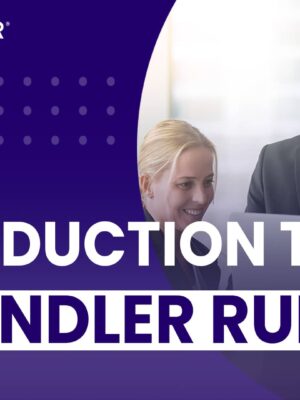Six Selling Certainties

1) If your 30-Second Commercial doesn’t answer a prospect’s “What’s in it for me?” question, there will be nothing in it for you!
The objective of a 30-second commercial is to capture a prospect’s attention for the purpose of engaging him or her in a relevant and meaningful conversation, relevant to their needs, wants, challenges, problems, goals, and objectives. And meaningful in relation to the outcomes the prospect desires.
Therefore, your commercial must focus first and foremost on the prospect’s circumstances, and then on the process by which your product or service brings about desired outcomes.
Except to the extent that they help describe the outcome-achievement process, specific features, functions, benefits, and advantages of your product or service should not be part of the commercial.
The bottom line: your commercial should focus on them—your prospects—not on you or your products and services.
2) If prospects understood the true nature of their problems, they wouldn’t need you.
If prospects fully understood the underlying reasons for and contributing factors to the situations for which they seek a solution (a product or service), they wouldn’t need you to help them find the most appropriate one. A catalog of products or list of services would suffice.
But, when prospects find themselves in challenging situations, they tend to focus on what is in front of them, not the chain of events that led up to the situations. And, they tend to describe their situations in relation to what they believe the solutions to be—solutions that will address the immediate problem. For example: “We need to step up production;” “We need new software;” and “We need to expand our market reach.”
While the descriptions of the desired outcomes may be appropriate, they tell you little or nothing about the circumstances—the sequence and mix of events—that created the needs. Until you have uncovered those elements, you can’t prescribe a solution that will ensure that the circumstances and associated problems won’t reoccur. And more importantly, you have brought no more value to the interaction than any other salesperson who has a product or service to offer that meets the prospect’s “We need…” description.
It’s bringing to light and enabling prospects to understand the underlying reasons for the situations they need to address that sets you apart from other salespeople. Helping your prospects discover something they didn’t know before meeting you is often the slight edge advantage you need to obtain the business.
3) When analyzing a prospect’s situation, if you don’t know what you’re looking for, you’re not likely to find it.
Since prospects typically don’t fully understand the genesis of their problems, it’s up to you to bring that knowledge to the encounter. If you’re not thoroughly knowledgeable about the developmental structure of the problems your product or service is designed to address, you are no better off than your prospects. Without that knowledge, you will neither be able to recommend with certainty the most appropriate solutions nor will you be able to logically and persuasively justify your recommendations.
It’s important to learn about the features and functions of your product or service, but it’s more important to understand the reasons for those elements—how they address the structural aspects of the problems. Then, you’re in a position to help your prospects better understand their situations “from the ground up” and recognize your recommendations as best-fit solutions.
4) Prospects who say, “If I like what I see, I’ll buy it,” never see anything they like.
Prospects who don’t have (and can’t articulate, except in broad general terms) a specific outcome they desire are usually not good prospects. More often than not, one of two things occurs. They never see anything they “like,” and of course, never buy anything. Or, they make a purchase, but they’re never satisfied. They become the client you never wanted.
Part of your responsibility when developing an opportunity is to help prospects identify and shape the specific outcomes they seek. If you find that to be an impossible task, it’s time to find another prospect.
5) When a prospect says, “Money’s no problem,” it will always end up being one.
A critical element in qualifying a selling opportunity is discovering the prospect’s investment expectations or limitations. Prospects will sometimes attempt to avoid discussing the topic by saying, “Money’s no problem.”
While “money” may not be a problem (i.e., the prospect has a sufficient budget to cover the required investment for whatever you may recommend), the prospect’s reluctance to reveal that amount is a problem. When a prospect is reluctant (or refuses) to provide relevant information that would enable you to develop a best-fit solution, it’s an indication of a lack of trust, or perhaps an ulterior motive, on the part of the prospect. And that’s an issue that should be addressed before you go any farther.
There’s another, more direct explanation for a prospect’s “money’s no problem” answer. It’s “no problem” because the prospect has already made up his mind that you’re not getting any of it.
6) If you allow a prospect to “think it over” after a presentation, you’ll be the only one doing any thinking.
In most cases, a presentation should represent the culmination of the development process—followed by a decision from the prospect to either buy or not buy your product or service. In a complex selling situation, a decision from an intermediate decision maker, for example, may be to recommend… or not recommend your product or service to the final buying committee. In either case, you need to obtain a decision.
In order to obtain that decision, you’ll need to do two things. First, do a superlative job of qualifying the opportunities so you’ll know exactly what must be included in your presentations in order for the prospects to say “yes,” and perhaps more importantly, what would cause them to say “no.” Second, you must know your prospects’ decision timeframes so you are presenting at a time when they are in a position to make a decision. If, for example, a prospect is looking at three companies, you want to be the last person to make a presentation, not the first.
What do you do if you can’t be the last? Ask your prospect to view your presentation as if you were the only one seeking their business, and give you a “yes” or “no” decision at its conclusion, with the understanding that a “yes” doesn’t guarantee that you’ll ultimately get the business. Walking away with a decision, even if it’s “no,” at least lets you know how you did. It’s certainly better than leaving with no feedback—which is exactly what a “think it over” is—and wondering how your presentation was received.
Check out these blog posts to learn more about improving your sales process.








